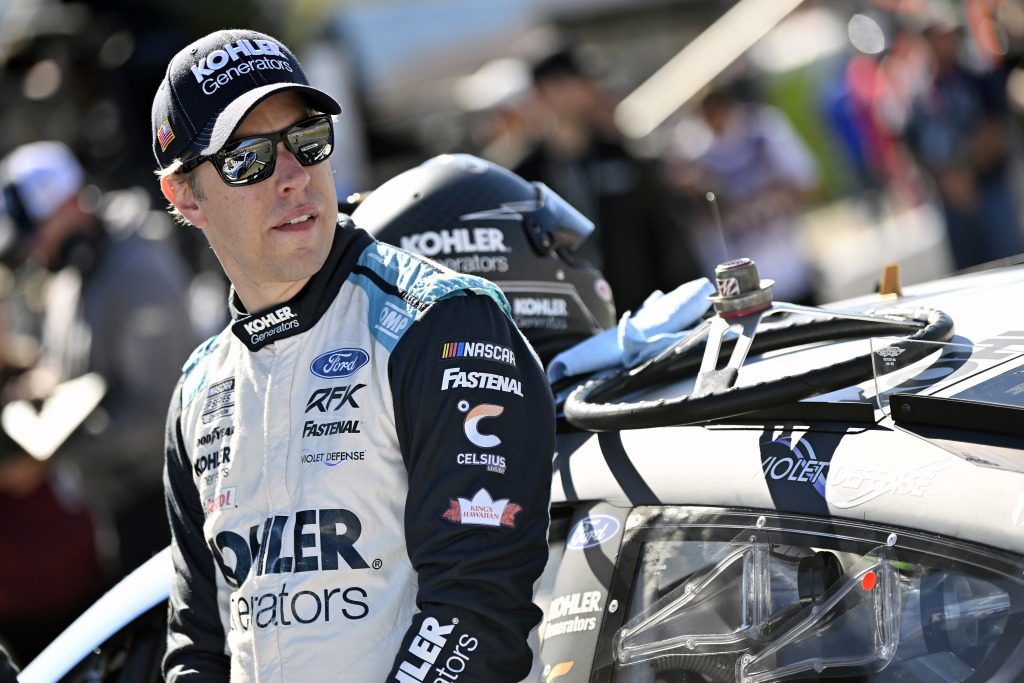As the first driver hit with an L2 penalty for modifications made to a single-source supplied part on the Next Gen car, Brad Keselowski understands the situation NASCAR and Hendrick Motorsports are in this week.
Keselowski, admittedly, is not educated enough to speak to the specific issue with the Hendrick Motorsports louvers, not having seen the ones confiscated last weekend at Phoenix Raceway. NASCAR officials deemed they were modified and hit the team with 100-point deductions, playoff point deductions and fines.
A year ago, Keselowski’s No. 6 Ford was under scrutiny after the spring race at Atlanta Motor Speedway. His car was one of the random cars taken by NASCAR post-race for further evaluation at the R&D Center. It was found that a tail panel had been modified, which Keselowski later explained was a repair job that could have been better, forcing NASCAR’s hand when it came to issuing a penalty and showing the pieces were not to be touched.
“It was tough,” Keselowski said. “Immediate emotions are to be frustrated and angry, but I don’t feel that way today. In fact, when I saw NASCAR a couple of weeks ago, we had a car get inspected after Daytona, I made a comment to them. Honestly, I told them, ‘Thank you. It’s one of the best things to ever happen to us.’ We came out of it better. It was good for the industry.
“From our perspective, it changed our culture inside of the company to where we had better behaviors. I thought it set a tone for the industry — again, I can’t speak for Hendrick, but with our issues.”
He was forthcoming with information after the process played out with RFK Racing losing its appeal. Not only did Keselowski say he understood the penalty (and later in the year said NASCAR has been too lenient and can control the garage by issuing penalties like candy), but he found the appeals process to be fair and different from what he anticipated. The co-owner continued to share those same sentiments Saturday.
[lawrence-auto-related count=3 category=1428]
“I think I made a few comments a month later about the importance of penalties in the garage. They serve a purpose,” Keselowski said. “I think it’s really easy, and I’ve fallen victim to this as well – to look at NASCAR as the boogieman. In a lot of ways, they’re trying to help us and trying to help the sport and make sure that it can be healthy. Whether or not NASCAR is right or Hendrick is right with their penalty, I don’t know to that specific situation, but as a whole, I do understand the inclination and the emotion behind the teams and maybe the fans getting fired up over a penalty.
“But in the end, penalties are there for a reason. They’re there to make this circus somewhat manageable and sustainable, so as to what ends up happening with Hendrick, I can’t speak to it again, not knowing enough, but from my perspective and kind of having lived it, I’m probably 180 from where I was a year ago on it, and I understand it at a high degree.”
Hendrick Motorsports is arguing the parts are not being provided to the teams to the specifications they should be. The organization also said there’s been a lot of dialogue between the teams, manufacturers and NASCAR, but it changes weekly on whether the parts can be cleaned up if they don’t fit properly.
Both a driver and owner, Keselowski acknowledges there are issues with the parts. It comes down to ensuring teams have cleared any work with NASCAR.
“Yeah, there’s always a part somewhere that’s not what you want it to be, and there’s a portal that NASCAR has to submit those parts to, and there’s usually some dialogue and communication around that,” Keselowski said. “Generally speaking, I feel like NASCAR has been amenable to work through those and has gotten significantly better over the last year.
“We have parts, here and there, that are issues, and NASCAR has come up and said, ‘Hey, you can do this,’ or, ‘You can’t do it.’ It’s really more or less about the communication with them.”
